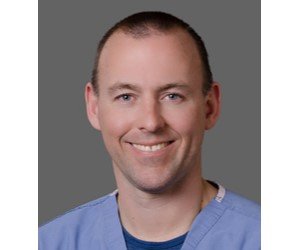
Q&A with Jonny Kim, MD, NASA Astronaut Candidate
When the 12 members of NASA’s 2017 Astronaut Candidate Class report to Johnson Space Center ... Read more
Written by: Student Doctor Network
Published on: June 14, 2017

When the 12 members of NASA’s 2017 Astronaut Candidate Class report to Johnson Space Center ... Read more
Written by: Student Doctor Network
Published on: June 14, 2017

In our last installment, we recognized the value of money as a means of allotting ... Read more
Written by: CrispyDoc
Published on: June 13, 2017

As a premedical student, you are likely familiar with some of the subjects that are ... Read more
Written by: Cassie Kosarek
Published on: June 9, 2017

Dear Me, M3: As graduation approaches and the days of fourth year freedom quickly fade ... Read more
Written by: Danielle Bottalico
Published on: June 7, 2017

Sometimes it feels like prepping for med school really is like bracing yourself against the ... Read more
Written by: Atlantis Project
Published on: May 31, 2017

When you are in medical school, your job search may feel like a project that’s ... Read more
Written by: PracticeLink
Published on: May 30, 2017

In my last article, I wrote about my perspective on the third year of medical ... Read more
Written by: Brent Schnipke
Published on: May 29, 2017

I was seated on a child-sized plastic chair along a wall in the classroom when ... Read more
Written by: Nicole Hawkins
Published on: May 25, 2017

Reposted with permission from here. I can finally say I’m in my last year of ... Read more
Written by: Miguel Galán de Juana
Published on: May 24, 2017

Dr. Jennifer A. Villwock is the current Rhinology and Skull Base Fellow at the University ... Read more
Written by: Rafid Rahman
Published on: May 22, 2017

Dr. Abeyna Jones is an occupational medicine registrar at King’s College Hospital and the Medical ... Read more
Written by: Gloria Onwuneme
Published on: May 17, 2017

Updated February 15, 2022. The article was updated to correct formatting and minor grammatical errors. ... Read more
Written by: Guideline Central
Published on: May 16, 2017

For medical school students, perhaps one of the most difficult choices to be made in ... Read more
Written by: Brian Wu
Published on: May 15, 2017

The 2018 AMCAS application cycle has started! If you plan to apply to attend medical ... Read more
Written by: AAMC Staff
Published on: May 11, 2017

You have a great MCAT score, a strong GPA, and have represented yourself and your ... Read more
Written by: Cassie Kosarek
Published on: May 10, 2017

Dr. Tyler Edwards is an attending physician who specializes in family medicine, practicing for almost ... Read more
Written by: Thomas Richards
Published on: May 8, 2017

By Amy Rakowczyk, SDN Staff Writer With Step 1 completed, and hopefully after a little ... Read more
Written by: Amy Rakowczyk
Published on: May 4, 2017

July 21, 2015 Dear Me, MD: Now that you have opened this letter, you may ... Read more
Written by: Danielle Bottalico
Published on: May 2, 2017

While student loans are a necessary financial tool for most of today’s future doctors, the ... Read more
Written by: Maricel Tabalba
Published on: May 1, 2017